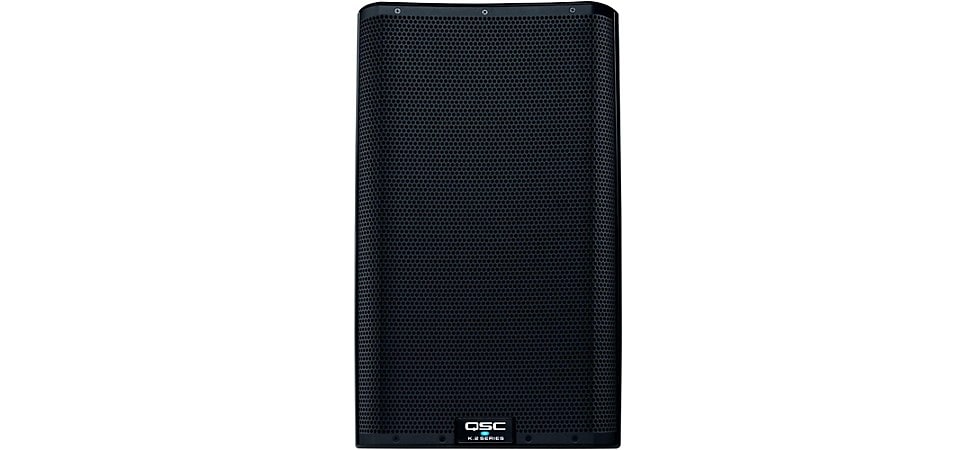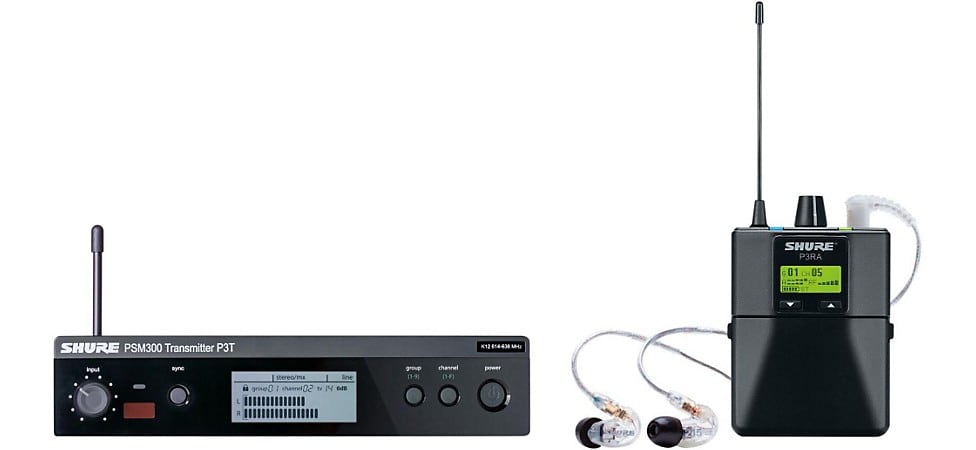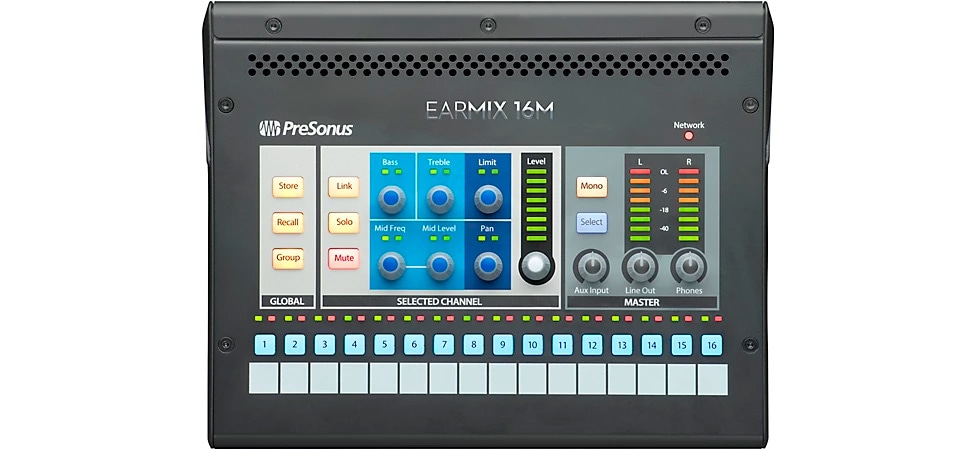During a worship service, a crucial but often overlooked element of the sound system is the stage monitoring. For everyone on stage to do their best, they need to be able to hear themselves clearly, whether that’s the speaker, the worship leader and backup singers, or the choir, orchestra and band. Each of these groups has their own unique needs and will likely need their own mix and monitoring approach. Because of this, what stage monitoring you need for your house of worship will greatly depend on who’s on stage for a typical service, the size of sanctuary you have and the specific needs of your leaders.
To help you put together the right monitoring solution for your house of worship, let’s look at the differences between floor monitors, sidefill monitors, in-ear monitors (IEM systems) and personal monitoring mixers. We’ll also address which monitoring approach is recommended for different situations.
Floor Monitors
The most basic and common form of monitoring is a floor monitor. Sometimes called a “wedge monitor” due to its shape, the floor monitor is an angled speaker that provides monitoring for performers on stage. Floor monitors can either be purpose built for this use, or can be multi-use speakers like the QSC K12.2 or EV ZLX Series, which have angled cut-ins, giving the option to orient them in “wedge” formation. These monitors are affordable, easy to install and simple to configure on most soundboards.
Because floor monitors are speakers, selecting a floor monitor involves many of the same considerations as when selecting other types of speakers. In other words, you need to consider items such as frequency response (the range of frequencies the speaker can suitably reproduce). Low frequency response is often not as important in a floor monitor as it is for a loudspeaker, but you still want to be sure your worship leaders can hear the musicians clearly. You will also need to look at the output of the speaker, ensuring it can be heard by the intended leader over other musicians on stage (drums, orchestra, choir, etc.).

Pictured: QSC K12.2 Powered 12" 2-Way Loudspeaker System With Advanced DSP
Finally, you will need to consider power capacity, particularly if you are looking at passive monitors. As with other speakers in your sound system, floor monitors are available in both passive (unpowered) and active (powered) varieties. Passive monitors require more space and gear to set up (each monitor requires an amplifier channel and potentially a DSP), but they give the potential for redundancies in case a particular amplifier goes down. Active monitors, on the other hand, are all-in-one units, but don’t have the redundancy capabilities of passive systems. For help finding the right floor monitors for your house of worship, call the experts at Guitar Center Professional.
Floor monitors are great because they provide ample monitoring with only a few speakers. However, they’re still speakers that generate noise on stage when the general goal is to reduce sound from the stage. Also, like all speakers, monitors require proper placement to prevent feedback. In fact, floor monitors typically need to be “rung out” before every service (that is, someone needs to move the microphones around the space to ensure there is no risk of feedback). Because floor monitors are heard by multiple people on stage, they are ideal next to lecterns/pulpits for presenters or speakers, as well as for groups of musicians that all use the same monitor mix, such as choir members or background vocalists.
An example of a good floor monitor is the Electro-Voice TX1122FM Tour-X. This 500W floor monitor delivers high output for small to medium-sized stages, with a 12-inch woofer and a 90-degree by 60-degree coverage pattern.
Sidefill Monitors
Like floor monitors, sidefill monitors are speakers often used on the sides of larger stages to provide additional monitor support for choirs, orchestras, etc. These speakers work similarly to front of house speakers and typically provide a complete mix of the band. They are good for large groups that all need the same mix, particularly on larger stages.
Because they are loudspeakers, you should look at the same considerations as we previously mentioned for floor monitors, including the decision regarding passive vs. active speakers. Again, proper positioning of these speakers is key, as is the coverage pattern, because these speakers are installed behind the microphones (making feedback a concern).
Small format two-way point source speakers are popular choices for sidefill monitors thanks to their low profile. Good options include the Electro-Voice EVF-1122D/64, RCF TTP 4-Aand JBL AC266.
In-Ear Monitors
If you want to reduce the amount of stage noise generated from your sound system, you can upgrade to an in-ear monitoring (IEM) system. These systems are typically wireless and work much like a wireless microphone system in reverse, with a rackmount or table-top transmitter and a bodypack receiver. There are even multi-channel transmitters available from some manufacturers that allow you to broadcast to multiple receivers from a single rack-mounted transmitter. Call the experts at your local Guitar Center Professional for help finding the right IEM system for you.
As we mentioned, IEM systems lower the amount of noise on stage. This is good for those in the audience, as it reduces bleedover and increases the overall sound quality from front of house. It also makes it easier for those using wedges to hear. Most houses of worship will use a combination of different monitoring methods for different musicians or other leaders on stage, meaning there could be a combination of floor monitors and IEM systems. Having instrumentalists and worship leaders use in-ear monitors will ensure pianists, choir and orchestra members, and others on stage using floor monitors are able to hear.

Pictured: Shure PSM 300 Wireless Personal Monitoring System With SE215-CL Earphones Frequency H20
Similarly, IEM systems also make it easier for their users to hear as well. IEM systems offer more clarity than floor monitors. This means adjustments to the mix can be more precise, as smaller adjustments are more noticeable by the listener. This is particularly important as IEM systems allow more musicians to have their own mix, ensuring everyone can hear exactly what they need to perform their best.
In addition to improving the sound for musicians and the audience, adding IEM systems also eliminates monitors from cluttering the floorspace. This gives your stage a cleaner look and maximizes space and freedom of movement for your worship team. It also reduces the need to “ring out” your monitors, as IEM systems don’t need to be rung out like floor monitors.
Good wireless IEM options for houses of worship are the Shure PSM 300 Series and the Sennheiser EW Series.
Personal Monitoring Mixers
One variation of an IEM system that gives even more flexibility to your musicians is a personal monitoring mixer. These systems use networked audio to route multiple tracks to small personal mixers on stage. Worship leaders then connect to these mixers using in-ear monitors.
Personal monitoring mixers like the Allen & Heath ME-1 or the PreSonus EarMix 16M put monitor mixing directly in the hands of worship leaders on stage. Each musician has their own mixer, with the ability to create their own mix using easy-to-use controls. These mixers offer a submix of (typically) 16 channels of audio and leaders can configure the setup of their mixer the way they like it.
In addition to giving artists more flexibility and control over their mix, personal mixers also free up time for the sound staff to focus on front of house, or any floor or sidefill monitors in the setup. Large houses of worship who don’t have personal mixers often need separate monitor engineers with their own soundboard, making personal mixers an even more appealing prospect. That said, personal mixers require band members to configure their own mix, which can be intimidating for those with little audio experience.

Pictured: PreSonus EarMix 16M 16-Channel Personal Monitor Mixer
One common issue with personal mixers is that, while they can be used with wireless IEM systems, setting this up can be complex. That’s why personal mixers are most commonly installed with wired connections. This requires worship leaders to stay rooted near the mixer. This is ok for some applications, but it can hinder the freedom of musicians who typically like to move around the stage. Personal mixers are ideal for houses of worship where worship leaders stand in fixed positions, and they are commonly used by instrumentalists, lead singers and backing vocalists.
As you can see, there are a wide range of options to consider when selecting a monitoring system and many houses of worship will use some combination of them. Speakers and pianists often prefer floor monitors, while choirs and orchestras will use either floor monitors or sidefills (or both). Other worship leaders may use in-ear monitoring of some form, either using a personal mixer or a wireless IEM system. Of course, no matter which system(s) you select, the goal of each is the same: ensuring everyone on stage can hear themselves, perform to the best of their ability and maximize the impact of their efforts.
To learn more about monitor mixing, check out our Ultimate Guide to Stage Monitoring for more information. And if you’re ready to begin looking for your next stage monitoring solution, reach out to the experts at Guitar Center Professional to help you find exactly what you need for your application.







